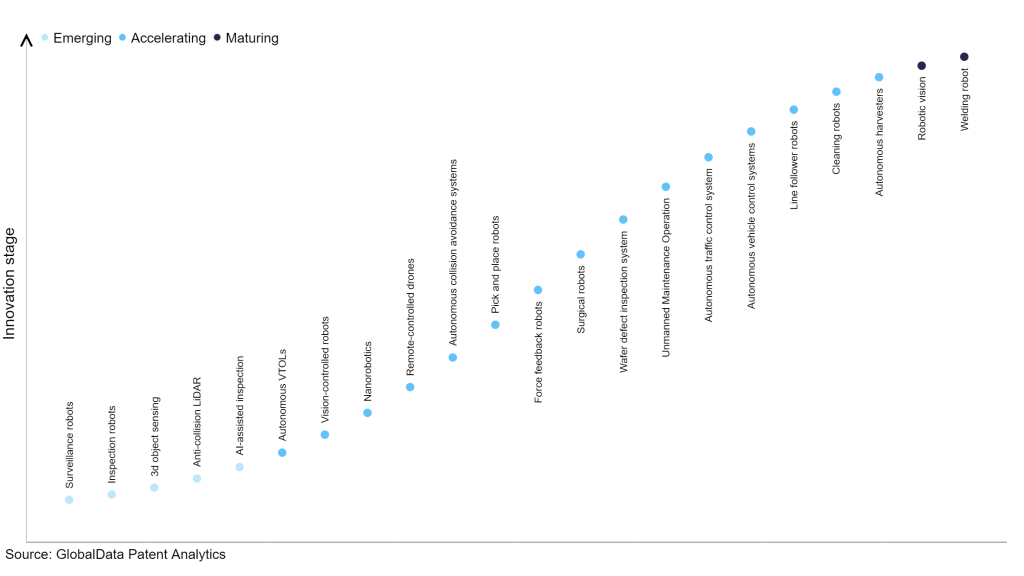Robotics innovation: Leading companies in autonomous harvesters

The technology sector remains a hub of innovation, with advancements in robotics technology being a driving force. Developments in sensors, machine learning, and artificial intelligence have enabled the creation of robots that possess enhanced capabilities and versatility thereby growing importance of technologies such as computer vision, machine learning, GPS, sensors, and actuators. These technologies enable autonomous harvesters to operate efficiently and accurately, without the need for human intervention. In the last three years alone, there have been over 3.6 million patents filed and granted in the technology industry, according to GlobalData’s report on Innovation in Robotics: Autonomous harvesters.
However, not all innovations are equal and nor do they follow a constant upward trend. Instead, their evolution takes the form of an S-shaped curve that reflects their typical lifecycle from early emergence to accelerating adoption, before finally stabilising and reaching maturity.
Identifying where a particular innovation is on this journey, especially those that are in the emerging and accelerating stages, is essential for understanding their current level of adoption and the likely future trajectory and impact they will have.
300+ innovations will shape the technology industry
According to GlobalData’s Technology Foresights, which plots the S-curve for the technology industry using innovation intensity models built on over 2.5 million patents, there are 300+ innovation areas that will shape the future of the industry.
Within the emerging innovation stage, AI-assisted inspection, anti-collision LiDAR, and 3D object sensing are disruptive technologies that are in the early stages of application and should be tracked closely. Autonomous harvesters, cleaning robots, and line follower robots are some of the accelerating innovation areas, where adoption has been steadily increasing. Among maturing innovation areas are welding robot and robotic vision, which are now well established in the industry.
Innovation S-curve for robotics in the technology industry

